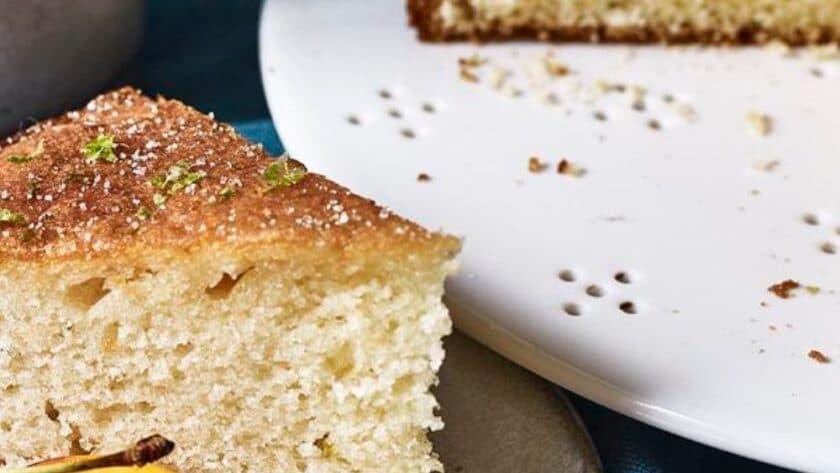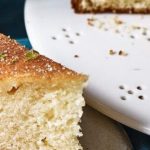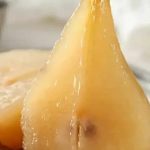Mary Berry’s Yoghurt Cake is a delightful, moist, and tangy cake that is simple to prepare, making it perfect for everyday baking. The yoghurt adds a lightness to the cake, keeping it wonderfully soft and fluffy. This cake is a great option for tea-time, dessert, or even a casual snack, with its subtle sweetness and tender crumb.
What is Mary Berry’s Yoghurt Cake?
Mary Berry’s Yoghurt Cake is a soft, moist sponge made using natural yoghurt, which gives the cake a light and airy texture. The addition of yoghurt keeps the cake moist without being too heavy, and the recipe calls for basic pantry ingredients like flour, sugar, and eggs. This cake can be enjoyed on its own or with a drizzle of icing or fresh fruit for extra flavor.

Other Popular Recipes
- Mary Berry All-In-One Victoria Sponge Cake
- Mary Berry Victoria Sponge with Buttercream
- Mary Berry Chocolate Sponge Cake
Why You Should Try This Recipe
- Moist and tender: The yoghurt ensures the cake is soft and stays fresh for longer.
- Simple ingredients: You likely already have all the ingredients in your pantry.
- Versatile: It’s a great base recipe that can be adapted with various flavors or toppings.
- Quick to make: With easy steps, this cake comes together quickly for a fuss-free bake.
- Perfect for any occasion: Whether it’s a casual snack or a sweet treat for guests, this cake fits the bill.
Ingredients Needed to Make Mary Berry’s Yoghurt Cake
For the Cake:
- Self-raising flour: 175g
- Caster sugar: 175g
- Butter: 175g, softened
- Eggs: 3 large
- Natural yoghurt: 150g
- Vanilla extract: 1 teaspoon
- Baking powder: 1 teaspoon
- Lemon zest: From 1 lemon (optional, for extra flavor)
For the Optional Icing:
- Icing sugar: 100g
- Lemon juice: 1-2 tablespoons
Equipment
- 23cm (9-inch) round cake tin
- Mixing bowls
- Electric mixer or hand whisk
- Spatula
- Zester (if using lemon zest)
- Baking parchment
Instructions to Make Mary Berry’s Yoghurt Cake
Step 1: Prepare the Cake Tin
- Preheat the oven: Set your oven to 180°C (160°C fan)/350°F/gas mark 4.
- Prepare the tin: Grease and line a 23cm round cake tin with baking parchment.
Step 2: Make the Cake Batter
- Cream the butter and sugar: In a large mixing bowl, beat the softened butter and caster sugar together until light and fluffy using an electric mixer.
- Add the eggs and vanilla: Beat in the eggs one at a time, followed by the vanilla extract, ensuring each egg is fully incorporated before adding the next.
- Fold in the dry ingredients: Sift the self-raising flour and baking powder into the mixture and gently fold it in using a spatula.
- Add the yoghurt: Stir in the natural yoghurt and lemon zest (if using) to create a smooth, slightly thick batter.
Step 3: Bake the Cake
- Pour the batter into the tin: Spoon the batter into the prepared cake tin, smoothing the top with a spatula.
- Bake: Place the tin in the preheated oven and bake for 30-35 minutes, or until the cake is golden and a skewer inserted into the center comes out clean.
- Cool the cake: Allow the cake to cool in the tin for 10 minutes, then transfer it to a wire rack to cool completely.
Step 4: Make the Optional Lemon Icing
- Prepare the icing: In a small bowl, mix the icing sugar with lemon juice until smooth and pourable. Adjust the lemon juice to achieve your desired consistency.
- Drizzle over the cake: Once the cake has cooled, drizzle the icing over the top for a sweet, tangy finish.
What Goes Well With Mary Berry’s Yoghurt Cake?
- Fresh berries: Serve with fresh strawberries, raspberries, or blueberries for added sweetness and color.
- Whipped cream: A dollop of lightly whipped cream pairs perfectly with the moist cake.
- Lemon curd: Add a spoonful of lemon curd to each slice for a zesty contrast.
- Tea or coffee: This cake is an excellent companion for a hot cup of tea or coffee.
- Honey: Drizzle with honey for an extra touch of sweetness.
Expert Tips for Making the Best Yoghurt Cake
- Use full-fat yoghurt: Full-fat yoghurt helps keep the cake moist and gives it a rich flavor.
- Don’t overmix: Fold the flour and yoghurt in gently to avoid overworking the batter, which can result in a dense cake.
- Test for doneness: Insert a skewer into the center of the cake – if it comes out clean, the cake is ready.
- Let it cool: Ensure the cake cools completely before adding any icing to prevent it from melting.
Easy Variations of Mary Berry’s Yoghurt Cake
- Citrus twist: Add the zest of an orange or lime for a citrusy flavor.
- Berry yoghurt cake: Fold in fresh berries like blueberries or raspberries into the batter for a fruity addition.
- Chocolate yoghurt cake: Add 2 tablespoons of cocoa powder to the batter for a chocolate version.
- Gluten-free option: Use a gluten-free self-raising flour blend to make this cake suitable for gluten-intolerant guests.
Best Practices to Store Mary Berry’s Yoghurt Cake
- Room temperature storage: Store the cake in an airtight container at room temperature for up to 3 days.
- Refrigeration: If the cake is iced, it’s best to store it in the fridge. Bring it to room temperature before serving.
- Freezing: You can freeze the un-iced cake. Wrap it tightly in cling film and foil, and freeze for up to 2 months. Thaw at room temperature before serving.
Best Practices to Reheat Mary Berry’s Yoghurt Cake
- Microwave reheating: Reheat individual slices in the microwave for 10-15 seconds on medium power for a quick refresh.
- Oven reheating: Warm slices in a 150°C (300°F) oven for 5-10 minutes to revive their freshness.
How Can I Make Yoghurt Cake Healthier?
- Reduce sugar: You can reduce the sugar in the batter without affecting the texture too much.
- Use whole-wheat flour: Swap part of the self-raising flour for whole-wheat flour to add more fiber.
- Lighten the butter: Use a lower-fat butter substitute or even Greek yoghurt to reduce the fat content.
Nutrition Value (per serving):
- Calories: 280 kcal
- Carbohydrates: 38g
- Protein: 5g
- Fat: 12g
- Fiber: 1g
FAQs
Can I use Greek yoghurt instead of natural yoghurt in this cake?
Yes, you can use Greek yoghurt in place of natural yoghurt. Greek yoghurt is thicker, so you may need to loosen the batter with a tablespoon of milk to maintain the cake’s light texture.
How do I prevent my yoghurt cake from becoming too dense?
To avoid a dense cake, make sure not to overmix the batter. Fold the dry ingredients in gently and avoid over-stirring once the yoghurt is added to keep the cake light and fluffy.
How long does yoghurt cake last?
Yoghurt cake will stay fresh for up to 3 days when stored in an airtight container at room temperature. If the cake is iced or filled with cream, it’s best to store it in the fridge.
Can I freeze yoghurt cake?
Yes, you can freeze yoghurt cake. Wrap it tightly in cling film and foil, then freeze for up to 2 months. Thaw at room temperature before serving. If you’ve iced the cake, freeze it without the icing and add the topping once thawed.
Final Words
Mary Berry’s Yoghurt Cake is a simple yet delicious treat that is sure to become a family favorite. The addition of yoghurt ensures a moist and tender crumb, and the cake can be customized with a variety of flavors and toppings.
More By British Baking Recipes
- James Martin Victoria Sponge
- Mary Berry 8 Inch Sponge Cake
- Mary Berry 9 Inch Sponge Cake
- Nigella Victoria Sponge
- Mary Berry Lemon Yoghurt Cake

Mary Berry Yoghurt Cake
- Prep Time: 15
- Cook Time: 35
- Total Time: 50 minutes
- Yield: 8
- Category: Dessert
- Method: Baking
- Cuisine: British
Description
Mary Berry’s Yoghurt Cake is a soft, moist sponge made using natural yoghurt, which gives the cake a light and airy texture. The addition of yoghurt keeps the cake moist without being too heavy, and the recipe calls for basic pantry ingredients like flour, sugar, and eggs. This cake can be enjoyed on its own or with a drizzle of icing or fresh fruit for extra flavor.
Ingredients
For the Cake:
- Self-raising flour: 175g
- Caster sugar: 175g
- Butter: 175g, softened
- Eggs: 3 large
- Natural yoghurt: 150g
- Vanilla extract: 1 teaspoon
- Baking powder: 1 teaspoon
- Lemon zest: From 1 lemon (optional, for extra flavor)
For the Optional Icing:
- Icing sugar: 100g
- Lemon juice: 1-2 tablespoons
Instructions
Step 1: Prepare the Cake Tin
- Preheat the oven: Set your oven to 180°C (160°C fan)/350°F/gas mark 4.
- Prepare the tin: Grease and line a 23cm round cake tin with baking parchment.
Step 2: Make the Cake Batter
- Cream the butter and sugar: In a large mixing bowl, beat the softened butter and caster sugar together until light and fluffy using an electric mixer.
- Add the eggs and vanilla: Beat in the eggs one at a time, followed by the vanilla extract, ensuring each egg is fully incorporated before adding the next.
- Fold in the dry ingredients: Sift the self-raising flour and baking powder into the mixture and gently fold it in using a spatula.
- Add the yoghurt: Stir in the natural yoghurt and lemon zest (if using) to create a smooth, slightly thick batter.
Step 3: Bake the Cake
- Pour the batter into the tin: Spoon the batter into the prepared cake tin, smoothing the top with a spatula.
- Bake: Place the tin in the preheated oven and bake for 30-35 minutes, or until the cake is golden and a skewer inserted into the center comes out clean.
- Cool the cake: Allow the cake to cool in the tin for 10 minutes, then transfer it to a wire rack to cool completely.
Step 4: Make the Optional Lemon Icing
- Prepare the icing: In a small bowl, mix the icing sugar with lemon juice until smooth and pourable. Adjust the lemon juice to achieve your desired consistency.
- Drizzle over the cake: Once the cake has cooled, drizzle the icing over the top for a sweet, tangy finish.



